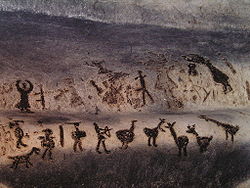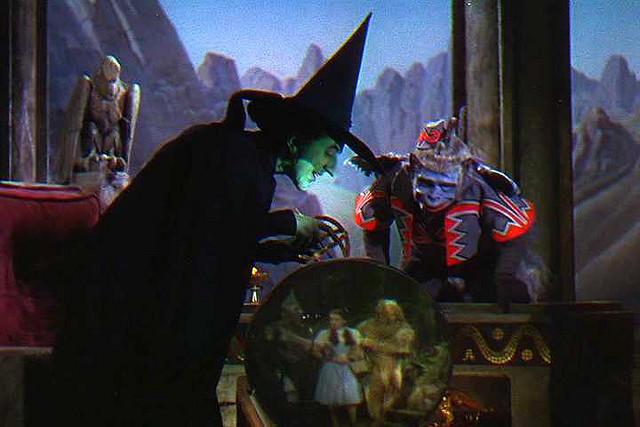You Should Be Playing
Mage: The Ascension
Get up.
Get up and fight.
Four words broadcasted into the depths of the subconscious of two hundred office drones, and the results are electrifying. Like a raging human wave, they surge forward, destroying everything around them. They did not need to understand the words to follow them, as they were spoken in a language handed down from Heaven itself to the secret followers of Hermes the Thrice-Blessed and inscribed into the roots of all human consciousness – a primordial ur-command for violence.
Not that the hacker tuned into Reality 2.0 to your left believes an ounce of that truth, your Truth, but he did not have to believe to blast your words into the minds of two hundred people, connected in his Truth to the simple local area hub on the simulation that is this existence. In any other world, at any other time, your two differing Truths would make you the direst of enemies, but not here. Not now. The Technocracy made sure of that, and now their office drones are the perfect cover for your private little war against their status quo.
They call you criminal, terrorist, Reality Deviant. You smile as you prepare your incantations, grasping your staff and calling forth the seven secret names of Archangel Michael. You are all those things they call you, but one more.
You are a wizard. And it is time to show them what happens to those who meddle in your affairs.
The Game
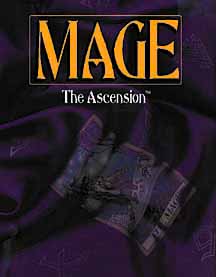 Mage: the Ascension was the third game released in White Wolf’s World of Darkness line of RPGs. Written by Stewart Wieck with Chris Early and Stephan Wieck in 1993, Mage: the Ascension rounded out the personal horror of Vampire: the Masquerade and savage horror of Werewolf: the Apocalypse with a game about cosmic truth struggling against paradox.
Mage: the Ascension was the third game released in White Wolf’s World of Darkness line of RPGs. Written by Stewart Wieck with Chris Early and Stephan Wieck in 1993, Mage: the Ascension rounded out the personal horror of Vampire: the Masquerade and savage horror of Werewolf: the Apocalypse with a game about cosmic truth struggling against paradox.
Currently out of print for over a decade, the third edition of Mage: the Ascension can still be purchased in many friendly local gaming stores for its retail price of $29.99. It is also available in PDF format on DriveThruRPG for $17.99. Many of its library of supplements over its ten year publication can also be purchased on DriveThruRPG for varying prices.
Breaking from the horror mold of the two previous games, Mage: the Ascension was a fundamentally modern, urban fantasy game that quickly surged to immense popularity. Mage ran from 1993 to 2004, with a second edition in 1995 and a Revised edition in 2000. During this time, and well after it ended in 2004, Mage competed with Vampire as White Wolf’s top selling game and was frequently held up as one of White Wolf’s best products. The setting’s innovation and the flexibility of its Magick system were both critically acclaimed. Even in the years after its line was cancelled, Mage: the Ascension remains popular in the hobby – possibly even to the detriment of the New World of Darkness’s Mage: the Awakening.
Recently, a deluxe 20th Anniversary Edition was successfully funded on Kickstarter, allowing Onyx Path Publishing to go forward with update the game for the modern day. Alluding to its popularity, the campaign raised over $650,000, falling just shy of Onyx Path’s record for its most successful campaign to date (an honor held by Exalted 3rd Edition).

The Matrix: essentially one big Mage campaign.
Mage: the Ascension is a game of wonder and magic in a dark reflection of the modern world. At the root of Ascension’s setting is the concept that Reality is not nearly as well-defined as humanity has been led to believe. Reality is, in fact, defined by the consensual set of beliefs held by humanity, an entirely optional set of rules that allows humans to interact with each other and their surroundings in terms they can mutually understand.
The World of Darkness is peopled by billions of Sleepers, each held tight in their warm embrace of a sane, comfortable reality that is filled with perpetual disappointment and failure. Sometimes, however, a person of sufficient will and imagination reaches past that reality into something greater, Awakening their mind to the true nature of existence. These persons, their own knowledge of the world shattered and replaced by a new and different viewpoint, are Mages, capable of changing the fundamental nature of the existence around them. And the world does not necessarily take kindly to this change.
At one time, human knowledge and understanding was limited. The world humanity lived in was filled with terrible beasts, and magic was everywhere. The laws of what Could Be and what Couldn’t Be were a lot more fluid, and mages were immensely powerful. This ended when a large group of mages, known as the Society of Reason, decided that humanity needed a better world. Humanity needed a world with medicine to save lives, weapons to kill monsters, and governments that protected rather than exploited its workers.
From this Society, and their workings of magic, humanity found itself propelled along a trajectory into the Renaissance, and from there into the world we live in today. The Society of Reason transformed with the times into the Technocracy, a monolithic power structure behind a world where the wild and the dangerous finds itself pushed increasingly into the margins.
The modern world, however, is a failed experiment. Humanity was not unshackled by the Technocracy’s advances; it merely accepted a different kind of slavery. In the shadows of the modern world, magic lives on with the Traditions, and they are fighting a war against the Technocracy to free humanity’s soul.
Mechanics and Origins
As part of the World of Darkness line of Storyteller games, Mage: the Ascension uses a very similar system to both Vampire: the Masquerade and Werewolf: the Apocalypse. Characters possess a series of Attributes and Skills, sorted into categories for prioritization. They further possess a series of traits to guide their roleplaying, describe their social ties, and detail the special resources they could bring to bear. Players build a pool of d10s by adding their Attribute to their Skill, determined a target Difficulty on the roll, and roll their dice pool. Dice that equal or exceed the Difficult are Successes. Only one Success is needed to pass. Score several successes, and you pass with flying colors. Score no successes, and you fail. And if you score no successes but roll at least one 1, then things go very badly. The Storyteller system functions well in each of its incarnations.
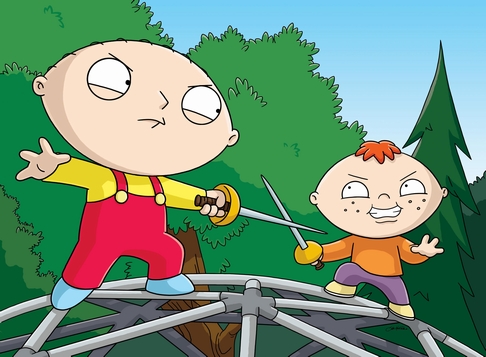
Some siblings just can’t play nice together.
However, unlike White Wolf’s later New World of Darkness, Mage: the Ascension was only loosely compatible at best with its sister games. While it used much of the same rules, the balance of power between mages and other supernatural beings, as well as how several of its more unique game elements needed entire supplements to be properly addressed. Like most of the original World of Darkness line, Mage: the Ascension worked best standing triumphantly on its own.
The system that set Mage: the Ascension apart from the rest of the World of Darkness was its highly dynamic and creative Magick system. In Mage, Magick was the means by which the Awakened could reshape reality along the lines of desire, made manifest through a personal and unique view on how reality “truly” worked. Each mage possessed a Paradigm, a set of beliefs regarding how the universe around them functioned that endowed them with the means to change reality.
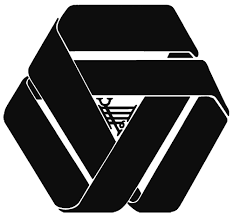
Technocrats
While each Tradition of mages had several common themes and tools, a mage’s own Paradigm was unique to them. Even the antagonistic Technocrats possessed unique Paradigms – though they usually cleaved tighter to their organization’s party lines. Mages who Awakened along a more mystical bent were often found and shaped by the Traditions, giving rise to the high wizardry of the Order of Hermes. This group coexisted alongside the shamanistic Dreamspeakers and the old blood-magic witchcraft of the Verbena. The Traditions even had two “technomancer” factions who had fled the Technocracy in earlier decades, as represented by the pulp mad science of the Society of Ether and the high tech, internet loving Virtual Adepts. It was the Paradigm, shaped by the mage’s Tradition, that made no two characters exactly the same.
The Magick
Magick itself was more a means to an end than any prescribed formula. While many supplements featured sample spells, these spells were only ever meant as a guideline for players and Game Masters to create their own expressions of Magick. Each mage possessed an Arete score, measuring their prowess in shaping reality, and a set of Spheres, describing their areas of focus and ability. The game’s nine Spheres were simple yet effective at describing what they applied to: Life applied to living creatures, Matter to inanimate objects, Mind to the psyche, and so on. Entropy and Correspondence remained the two most nebulous Spheres, with the first representing chance, circumstance, and fate, and the second being a combination of space and connection.
Each Sphere has a ranking between 0 and 5, representing the power and complexity of spells the mage is able to enact. A mage can merge together any or all of their Spheres when creating a Magickal Effect, combining all of their knowledge with manipulating the fabric of reality into some truly astounding results.
Mages could do anything from tear open holes in reality to summon demons, to hurl lightning bolts that seek out serial killers, to design sentient computer programs capable of gleefully infesting people’s dreams with pop up ads. Provided that the mage could explain the Effect using their Paradigm, and that the intent was within the reach of the Spheres, anything is possible. Literally.
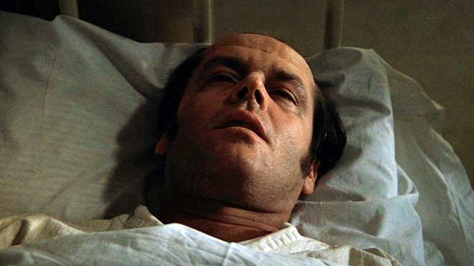
A special kind of Quiet
It is in dealing with the unAwakened world that mages face their greatest challenges. Magick done around the unAwakened must be subtle. Otherwise, the mage risks incurring punishment from reality in the form of Paradox. Paradox builds up on a mage like a static charge, causing Magick to go awry and to possibly even backlash against the mage.
Paradox backlash can ruin spells, cause physical harm, and even drive the mage into a state of special madness called a Quiet, where they lose touch entirely with reality itself. It is this Paradox that mages struggle the most against, undoing their wonders and preventing them from having a lasting effect on the world around them. Even the Technocracy struggles against Paradox, shackled to a plan of slowly trickling out the wonders of science and technology in precisely measured amounts to ensure their works are always believable. When they push things too far, their own backlashes have been known to cause wars and cripple economies.
The Power of Belief
At the root of every Mage: the Ascension story lies more than just the struggle between the Traditions and the Technocracy. At the root of Mage is the sense of wonder that lies with the power of the human imagination, whether it is in the pursuit of fantasy or knowledge. Mage: the Ascension challenges its players to look past the world that they live in to see the world as it could be, and more importantly, the world that they could make it be. Every mage is a force of change set against a world that resists them, and this is allows for stories of titanic struggles and unchecked ambitions. Mage: the Ascension is a game about humanity writ large in all its promises and failures, accomplishments and drudgeries. It is a game about the magic of the imagination, and just what sort of a world we would build if we just believed that we could.
And that is why you should be playing Mage: the Ascension.
David Gordon is a regular contributor to the site. A storyteller by trade and avowed tabletop veteran, he is always on the lookout for creative tabletop games. He can be reached at dave@cardboardrepublic.com.
You can discuss this article and more on our social media!
Photo Credits: Mage: The Ascension by White Wolf Publishing; The Matrix from Warner Bros. Studio; Magurata Cave Drawing from Novinvite News; Family Guy from Fox ; Wicked Witch of the West from Warner Bros. Studios; One Flew Over the Cuckoos Nest by United Artists

